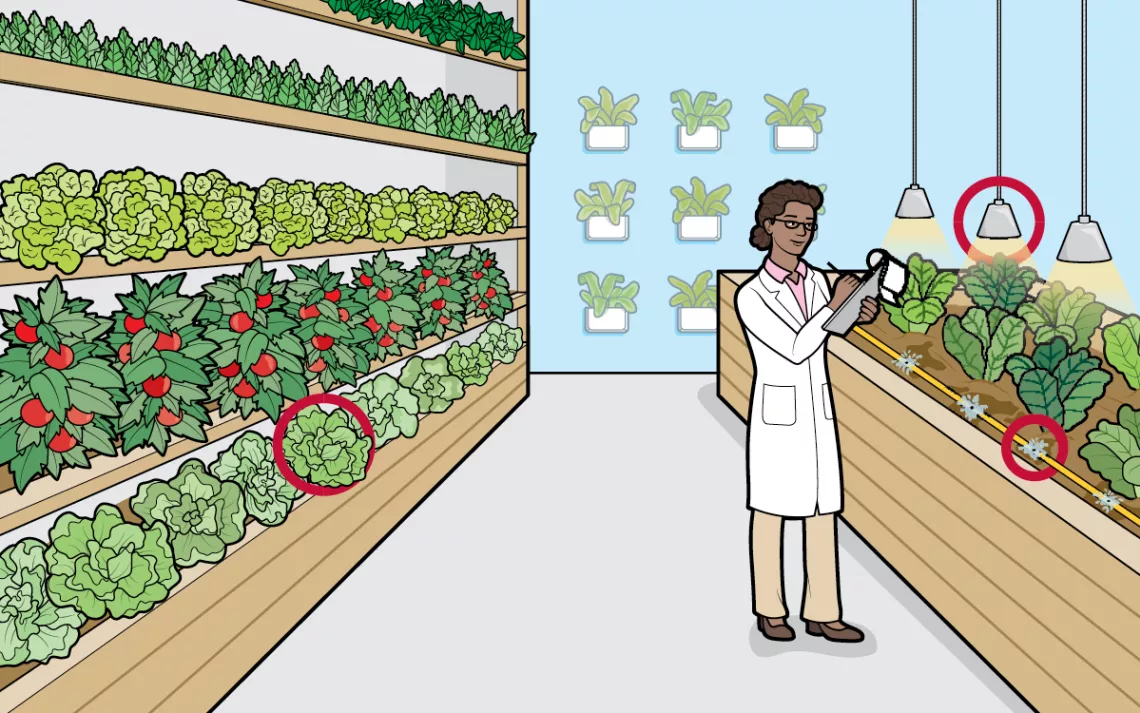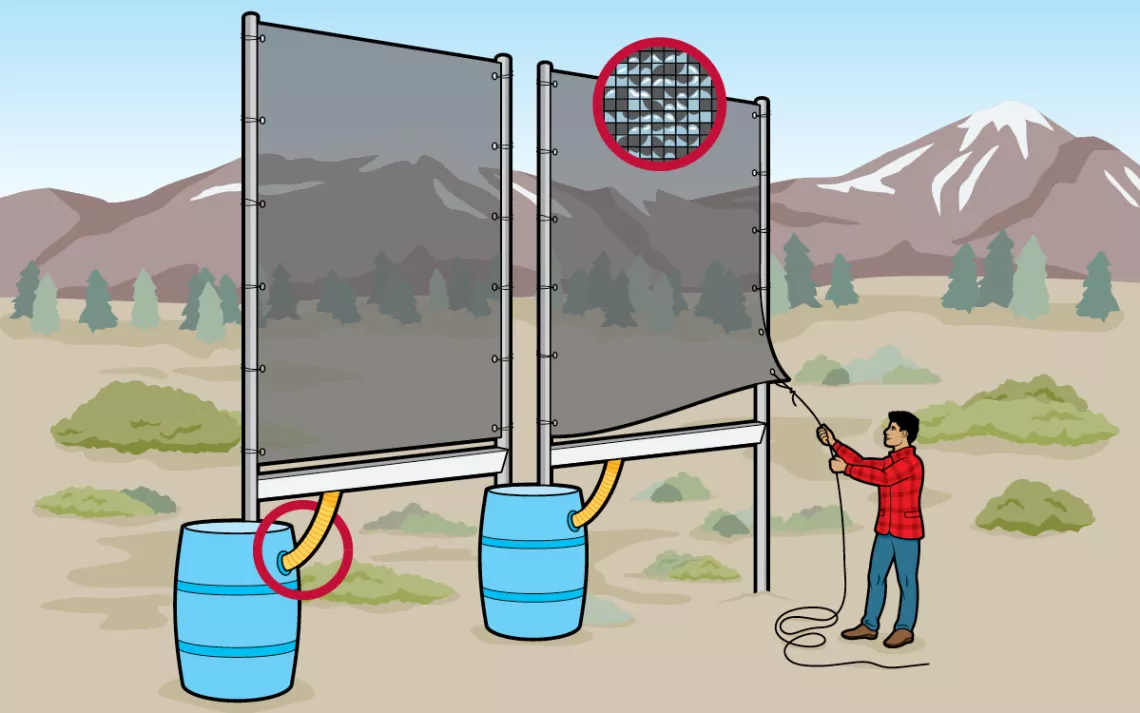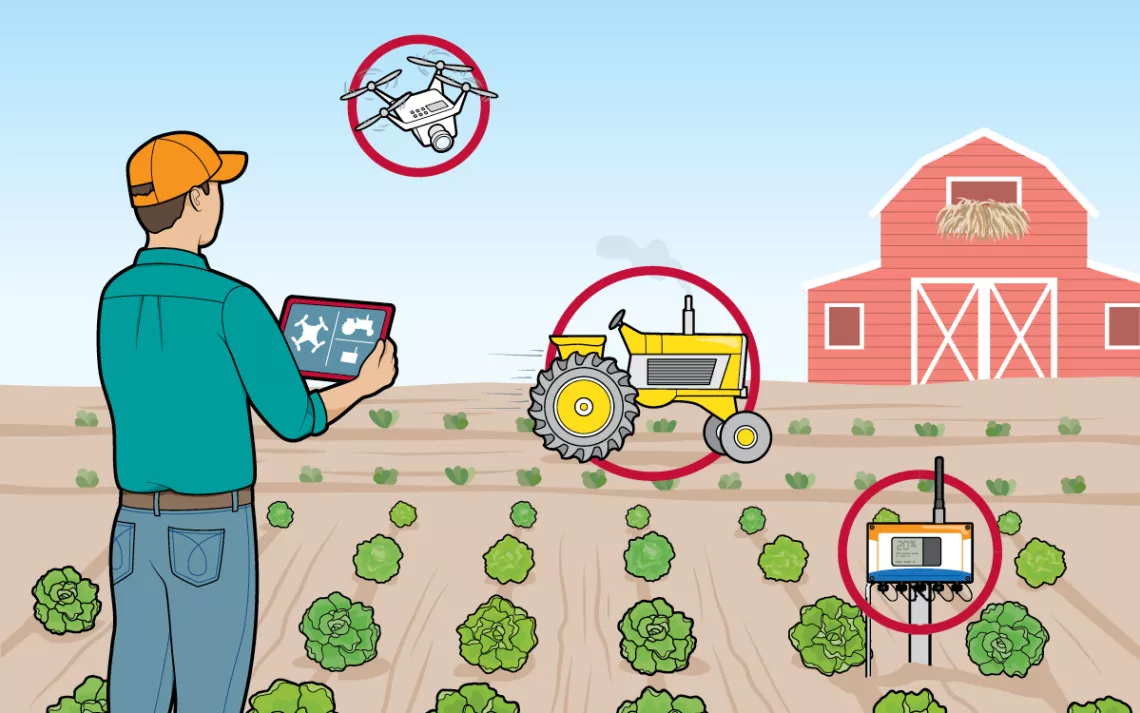Future Farming
High-tech agriculture may be the key to feeding a growing human population
With the world's population predicted to grow from 7.7 billion to almost 10 billion by 2050, the demand for food is increasing as climate change is expanding deserts, exacerbating droughts and floods, and making agriculture ever more unpredictable. Here's how modern farmers are doing more with less while trying to minimize their environmental impact.

Indoor Growing
Climate chaos outside requires more climate control inside—which is why urban and hydroponic farmers worldwide are taking cues from the Dutch, who have used indoor agriculture to turn their country into a major vegetable exporter. Indoor farmers can precisely control water and fertilizer inputs and use LEDs to emit photosynthesis-optimized light. Vanguard farmers are turning underground spaces, shipping containers, and even former meatpacking plants into efficient, soil-free growing operations.

Atmospheric Water Generation
In some of the world's driest corners, engineers have found ways to get water to people by wringing it out of the air. Thanks to passive fog- and water-vapor-capturing technology, some Peruvian and Chilean farmers no longer have to rely entirely on precipitation to water their crops.

Tech Farming
Precision agriculture was born in the 1990s—with self-driving, GPS-guided tractors—and has since grown into an industry projected to exceed $10 billion by 2025. Farmers are tech-ing up with in-field water-sensor irrigation, drones, multispectral analysis (which lets farmers see how plants are absorbing sunlight and water), and information-gathering satellites.
Slashing Cows' Methane
Cows naturally produce methane, which is among the most potent greenhouse gases. Mixing seaweed into livestock feed has shown promise in reducing the amount of methane each animal creates. Early tests reduced emissions by more than 85 percent in sheep and 50 percent in dairy cows.
No-Till Farming
Using a form of cultivation that improves moisture levels in the soil by reducing the intensity of ploughing, no-till farmers seed their crops without turning the soil. This retains the previous year's crop residue, which helps to restore nutrients to the soil and protect it from erosion.
This article appeared in the January/February 2019 edition with the headline "Future Farming."
 The Magazine of The Sierra Club
The Magazine of The Sierra Club



